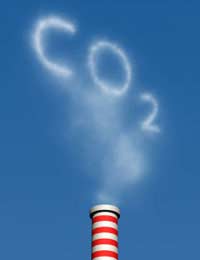What is Carbon Offsetting?

Offsetting carbon emissions is cited as one solution to the damaging effects of climate change but for many it is a confusing option. Therefore to help clear the air we present answers to some frequently asked questions about carbon offsetting.
What is Carbon Offsetting?
Carbon offsetting is a method of countering the damage sustained as a result of the release of carbon emissions (CO2) from everyday activities such driving, flying or heating buildings. For every tonne of CO2 emitted, an equivalent amount is said to be removed somewhere else.The idea behind carbon offsetting is not to undo environmental damage, but cut down the total amount of CO2 released into the atmosphere.
Who Offers Carbon Offsetting Schemes?
There are now numerous carbon offsetting providers that offer schemes through which individuals or companies can offset their carbon emissions. They calculate the emissions from a particular activity and then you pay a donation for an equivalent amount.What Activities Can I Offset?
Individuals or companies can offset any action that produces greenhouse gas emissions. They can pay for one particular action, such as an airline flight, or a series of activities over a period of time, for instance an employee’s annual car mileage.Offsetting flights is particularly popular, partly because flying is widely seen as a big threat to the environment and also because it is relatively easy to work out how much CO2 has been released.
What Types of Schemes Exist?
When carbon offsetting projects first started to appear over a decade ago they were largely associated with forestry schemes, including tree planting, but now donations could also go towards funding energy efficiency schemes or renewable energy schemes.Energy efficiency projects have recently started to appear in developing countries. These schemes could provide anything from energy efficient light bulbs or cookers to wind turbines.
Are Carbon Offsetting Schemes Appropriate for Businesses?
Yes! Businesses can offset the fuel used to power and heat their offices, and offset company transport emissions, such as business flights, shipping, and company car mileage.How Are Carbon Offsetting Projects Regulated?
The marketplace for offsetting schemes has been largely voluntary and unregulated up until recently. This has meant that it’s been difficult to ascertain whether a particular project will be genuine and will deliver the promised cuts, or be an inadequate or bogus enterprise.Widespread criticism about the lack of transparency in the market has led to increased regulation and the introduction of various voluntary standards.
What’s the Difference Between CERs and VERs?
These are both units of emission reductions – or carbon credits. The difference is that CERs (Certified Emission Reductions) have a higher status because they are only issued by Clean Development Mechanism (CDM) once a project has been validated and the emissions verified.VERs (Verified or Voluntary Emissions Reductions) on the other hand might have been verified by an independent auditor to a recognised standard (such as VCS) or simply not at all.
What Standards Should I Look Out For?
The launch of the Voluntary Carbon Standard (VCS) and the Gold Standard (GS) has helped introduce some integrity into the marketplace.The VCS is a new global standard and program for approval of trustworthy voluntary carbon offsets. Such offsets must have happened, be additional (see ‘What is Additionality?’), measurable, permanent, independently verified and unique.
The GS is awarded to voluntary projects and the Kyoto-approved projects set up by CDM that have particularly high sustainable development credentials.
What Schemes and Standards Are Proving the Most Popular for Companies?
Larger organisations tend to prefer CDM CER projects because of their stringent verification, which means a reduced risk to their reputation. These are typically large industrial projects.Smaller businesses are more likely to opt for voluntary projects that have been verified by a third-party standard such as the VCS because they are usually more diverse, interesting and meaningful. These might include community schemes, which have both social and environment benefits.
What is Additionality?
This means that without funding from a carbon offsetting scheme the project was not financially viable and so wouldn’t have happened. If you funded a tree planting project, for instance, it is important to ask whether the trees would have been planted anyway without the financial aid.How Effective is Carbon Offsetting in Tackling Climate Change?
Carbon offsetting does have a worthwhile role in dealing with emissions that can’t be avoided but it is not a solution in itself and needs to be used in conjunction with larger initiatives to lower a company’s company carbon footprint.Before considering carbon offsetting business should first think about how they themselves can avoid and reduce emissions.


Re: How to Control the Problem Of E-Waste
Amol - Your Question:I search this website on opera mini. Because I create a seminar on environment about e-waste. I…
Re: How to Control the Problem Of E-Waste
I search this website on opera mini . Because i create a seminar on environment about e-waste. i tell that website…